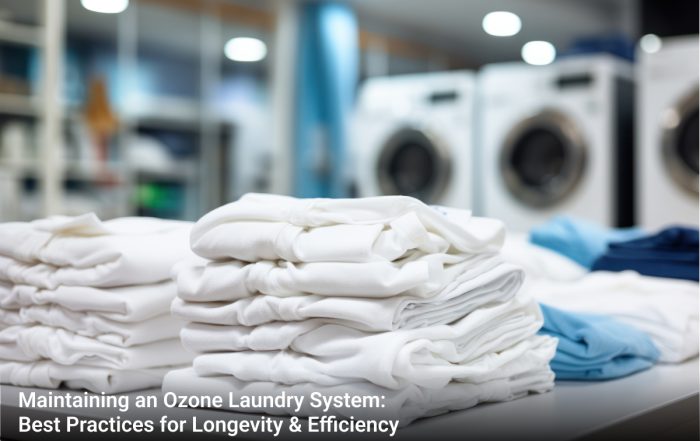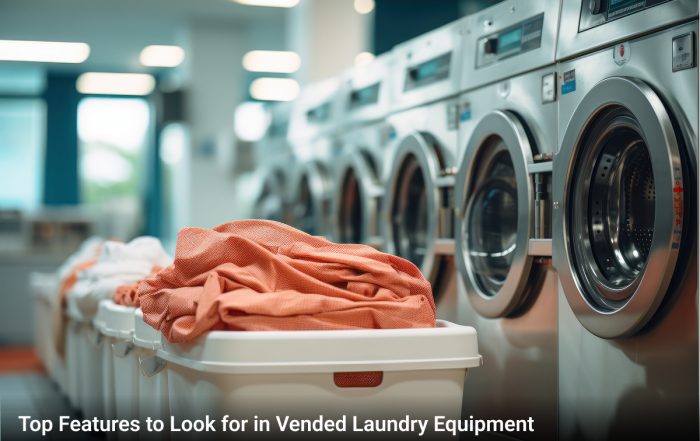Easy fixes for 5 common laundry problems

We know how frustrating it is when your laundry doesn’t come out perfectly … hey, we’ve been there, too. Even though we’re in the business of providing quality equipment and services, we still run into occasional problems.
Thankfully, there are some easy fixes for common laundry mistakes that can get you back on track in a jiffy. If you’ve ever encountered one of these problems, give our solutions a try!
1. Stinky smells
You’ve just pulled on a clean t-shirt or wrapped yourself in a fluffy towel when you notice a disgusting, musty smell. Gross! There are a few things that can cause this, even when your laundry is clean.
If you’re tossing wet, dirty stuff into your hamper, it can get nasty before it makes it to the washer, which leads to lingering smells. It’s always best to dry sweaty or damp stuff before you put it in the bin, or better yet, just wash it right away. If you’re like us and get a bit lazy about this step, at least use a laundry hamper that has some ventilation to allow your items to air out.
And once your dirty stuff hits the washer? Make sure you move it to the dryer as soon as the load finishes. Leaving clean, wet laundry in the washing machine contributes to mildewy smells that linger even after your load is dried, folded, and put away. It’s a good idea to ensure that it’s thoroughly dried too, since any leftover dampness can also cause smelliness.
Don’t worry if you’ve forgotten a load in the washing machine … we’ve done it, too, so we’re not judging. Run it through another wash cycle before you dry it, adding a cup of vinegar or a half a cup of baking soda to get rid of any rank smells before you dry it.
You can also prevent this problem from happening even when you’re not exactly prompt about switching your loads by keeping your machine as clean as possible. Regularly wipe down the door, drum, and dispenser drawers, paying special attention to any build-up on the rubber seal. Once in a while, run an empty load with a half cup of bleach, and always leave the washer door slightly ajar when not in use. This lets it air out a bit, and prevents your laundry from stinking.
2. Yellow fabrics
Nothing says clean like a freshly washed, yellowing sheet. We’re kidding, of course. Yellow fabrics are a common laundry frustration. It can be caused by neglecting to sort your laundry, or improperly storing fabrics in things like cardboard boxes or on wooden shelves. Your antiperspirant and body salts can also leave yellow stains under your arms. Eew.
Check the labels before attacking this problem, since some fabrics will be more delicate. Using oxygen-based bleach is an effective way to get rid of yellow stains. Soak your items first in a diluted solution before washing them in the hottest water you can, depending on your fabric. Avoid chlorine bleaches, which can actually contribute to the problem of yellowing.
If your items won’t be safe with an oxygen-based bleach, you can try hanging them out in the sun. UV is an effective whitener, so line drying items that have yellowed can help to remove unsightly stains.
Yellow stains under your arms can be prevented by switching to an aluminum-free deodorant. And make sure that you choose a fabric-safe storage box and use acid-free paper to protect your clothes when storing seasonal or special items.
3. Static cling
Tell us we aren’t the only ones who have left the house without noticing a stray undergarment stuck to our clothing? Yep, static clinging can really ruin a good day.
Since dryer sheets work by leaving a chemical coating on your clothes, they might solve your static problem but they’ll leave you with a host of other ones. Instead, try using dryer balls that effectively move items around in the dryer to prevent clumping and allow air to circulate better. You can even dampen wool dryer balls to further combat static.
If you’re still troubled by static clinging, try out this science trick. Pin a couple of metal safety pins to your dryer balls or inside your articles of clothing. Alternatively, you can make firm balls out of aluminum foil. These will both attract the extra electrons and prevent you from having any more embarrassing static mishaps.
4. Holes
You know what really sucks? Pulling on your new favourite outfit only to notice that there’s a hole right in the front. Little holes seem to pop up without explanation all the time!
One way to prevent this is by separating out your delicates and washing them separately or by hand. But since holes also seem to show up on sturdy tees and other items, you’ll probably need to take precautions for those, too. Check for embellishments that might catch on other things, and wash those pieces by hand or in a laundry bag. And make sure that you do up buttons and zippers to avoid snags.
Since thin, cheaper fabrics are also sometimes to blame, it can be helpful to slow down your spin cycle to avoid making small holes worse. That way, you can get a few more wears out of your favourites before you need to launch a full repair job.
5. Crunchy fabrics
Nothing like rubbing down after a shower in a starchy, scratchy towel, right? Nope … hard pass on that one. But keeping towels and other items soft and fluffy can be tricky if you have hard water.
How do you know if hard water is to blame? It’s likely the culprit if you regularly notice that your laundry is stiff, your colours fade quickly, and your whites look dingy. If you want to be sure, home improvement stores sell DIY kits so you can test your water for hardness.
Hard water contains more calcium, magnesium, and other dissolved minerals that affect your laundry. The way these minerals interact with detergent makes it less powerful, so even though we keep reminding you not to use too much of it, you’ll likely need more detergent if your water is hard.
Consider switching to a higher quality detergent that’s better at dealing with high levels of minerals, and choose liquids that are more effective than powders. Setting the water to a warmer setting can improve the cleaning abilities of your detergent by increasing chemical reactions in the wash load.
Another (although more expensive) option is to install a water softener. These appliances add sodium to the water, and offer better cleaning at lower water temperatures and with less detergent.
If your laundry problems are giving you a headache, you aren’t alone. Even the laundry experts need to troubleshoot sometimes. If these tips don’t rid you of your laundry woes, come visit us at Coronet Equipment. We’re always ready to provide you with effective solutions and reliable laundry systems.
Recent Posts
How a Washer Extractor Can Save You Money
When it comes to high-demand laundry operations, efficiency isn't just a bonus—it's a necessity. Whether you’re managing a commercial laundry facility, a sports team, or a high-volume household, investing in a washer extractor can significantly [...]
Maintaining an Ozone Laundry System: Best Practices for Longevity & Efficiency
Ozone laundry systems have become a trusted solution for commercial facilities seeking effective disinfection, lower utility costs, and reduced reliance on harsh chemicals. These systems use ozone gas—a powerful natural oxidizer—to sanitize laundry with cold [...]
Top Features to Look for in Vended Laundry Equipment
Choosing the right vended laundry equipment can make all the difference in the success of your commercial laundry facility. Whether you operate a laundromat, run laundry rooms in multi-unit housing, or manage facilities at a [...]



